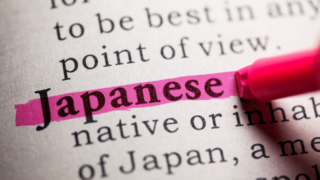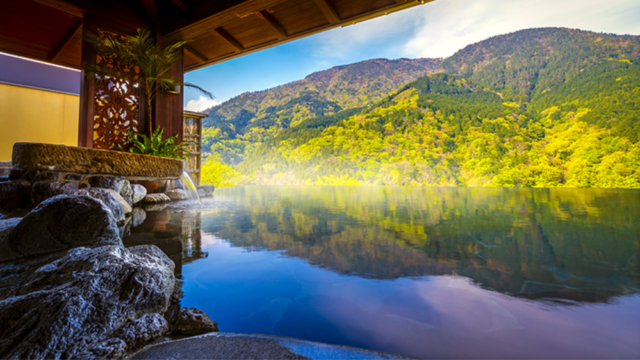
15 Things to Know Before Visiting Japan
For first-time visitors or those who have only been to Japan a few times, the unique culture and societal norms can be surprising. From train etiquette to tipping practices and discount rail passes, here are 15 things to know to make your journey through Japan more enjoyable.

- 1. Basic English is Understood (But Knowing Some Japanese Helps)
- 2. Prepare Japanese Yen in Cash
- 3. Understand Train Etiquette
- 4. Pedestrians Walk on the Left
- 5. Wear Easy-to-Remove Shoes
- 6. Tipping is Not Necessary
- 7. Few Trash Bins and Little Trash
- 8. Prepare for Wi-Fi
- 9. Utilize Convenience Stores
- 10. Use JAPAN RAIL PASS and Discount Tickets
- 11. Use Coin Lockers
- 12. Solo Travel is Safe
- 13. Explore Rural Areas
- 14. Try Everything
- 15. Travel During Any Season
1. Basic English is Understood (But Knowing Some Japanese Helps)

In Japan, major transportation hubs have English signage, making it relatively easy for English speakers to navigate. Many well-known restaurants, cafes, and eateries in tourist areas offer English menus, and ordering is often straightforward by pointing to the menu. Tourist attractions and landmarks also frequently provide English brochures and information boards.
However, when interacting with locals, you may find that only basic English is understood, especially outside major cities like Tokyo, Osaka, and Kyoto. Learning some basic Japanese phrases such as greetings, thank you, and how to ask for directions, or having a translation app handy can be very helpful. When speaking English, do so slowly and clearly. Additionally, carrying a phrasebook or a pocket guide can be beneficial for quick references.
2. Prepare Japanese Yen in Cash

While major stores accept debit and credit cards, cash is still king in Japan. Smaller establishments, such as family-run shops, traditional inns (ryokan), and some restaurants, may only accept cash. Therefore, it’s wise to carry enough Japanese yen. It’s also a good idea to carry small denominations as some places might not accept larger bills.
You can purchase Shinkansen tickets with a card, but for subway, local train tickets, and bus fares, you’ll need cash. If you run low on cash, ATMs at convenience stores like 7-Eleven, Lawson, and FamilyMart accept international cards and are usually multilingual. Be aware that bank ATMs often have limited hours and may not accept foreign cards. Also, having some cash on hand for emergencies, such as when taxi services or vending machines only accept cash, is crucial.
In July 2024, new banknotes were issued. Therefore, it’s important to know that two types of currency are in circulation.

3. Understand Train Etiquette

Japanese trains are known for their punctuality, cleanliness, and efficiency. Once onboard, you’ll notice the quiet and orderly atmosphere. This is because passengers adhere to strict etiquette rules: no phone calls, loud conversations, eating, or playing music without headphones. Even when using headphones, it’s considered polite to keep the volume low to avoid disturbing others.
Priority seats are available for the elderly, disabled, and pregnant women. If you’re in a priority seat and someone in need boards the train, be sure to offer your seat. Additionally, during rush hours, it’s advisable to avoid carrying large luggage to maintain space and comfort for all passengers. Observing the queuing system on platforms, where passengers line up in designated areas, ensures smooth boarding and disembarking.
4. Pedestrians Walk on the Left

In general, pedestrians in Japan keep to the left. On sidewalks, staircases, and escalators, it’s customary to stay on the left side. This helps to maintain a smooth flow of pedestrian traffic, especially in crowded areas. However, in Osaka, people stand on the right side of escalators, so be aware of local customs.
This left-side rule also applies to cycling. If you plan to rent a bicycle, ride on the left side of the road, follow traffic signals, and use designated bike lanes where available. Be cautious at intersections and always prioritize pedestrian safety. Understanding and respecting these unwritten rules will help you navigate Japanese cities more smoothly.
Citation:https://x.com/i/status/1792087015695208710
5. Wear Easy-to-Remove Shoes
You’ll often need to remove your shoes when entering temples, shrines, traditional accommodations (ryokan), and some restaurants. Therefore, shoes that are easy to take off and put on, such as slip-on sneakers or loafers, are very practical. Consider wearing socks in good condition, as you’ll be barefoot in these places.
There are usually signs in Japanese and English indicating when to remove your shoes. In rooms with tatami mats, it is customary to go barefoot or wear socks. Some establishments may provide slippers for indoor use, but it’s polite to take them off when entering tatami rooms. When visiting someone’s home, it’s also courteous to bring a clean pair of socks to change into if needed.
6. Tipping is Not Necessary
From convenience stores to traditional inns, Japan is renowned for its excellent customer service. Importantly, you don’t need to pay extra to enjoy this wonderful hospitality. Tipping is rare in Japan, even in restaurants and hotels. Service charges are typically included in the bill, and staff might refuse tips if offered.
However, at high-end restaurants, a service charge of about 10% may be added to the bill. This service charge is generally included in the total amount and is indicated on the menu. It’s also common practice to thank the staff directly for their service, as a simple “thank you” (arigatou gozaimasu) is appreciated.
In some cases, such as hiring private guides or personal drivers, small gifts from your home country can be a nice gesture of appreciation. These gifts should be modest and thoughtful, reflecting the polite and respectful culture of Japan.
7. Few Trash Bins and Little Trash

While traveling in Japan, you’ll notice the streets are clean and there are few trash bins. This is because people often carry their trash with them until they find a proper disposal site. The lack of public trash cans encourages individuals to be responsible for their own waste.
After enjoying a snack or treat purchased from a store, you may wonder where to dispose of the waste. The solution is to eat it where you bought it and use the store’s trash bins or hand it to the staff. Many convenience stores and vending machines have small trash bins nearby.
Trash bins are scarce in public areas, so if you miss the chance to dispose of your trash at the store, you’ll need to carry it until you reach your next destination or your accommodation. In Japan, trash is sorted for recycling. Dispose of plastic bottles, cans, and paper in designated recycling bins. Familiarize yourself with the local recycling rules, as they can vary by region.
8. Prepare for Wi-Fi
Free Wi-Fi spots are relatively few in Japan. Before your visit, it’s recommended to rent a portable Wi-Fi router or get a SIM card. Choose the option that best fits your travel needs. Portable Wi-Fi routers can be rented at major airports and online, and they provide a reliable connection for multiple devices.
Many accommodations now offer Wi-Fi. You can also find free, secure Wi-Fi at convenience stores and coffee shops like Starbucks and Tully’s Coffee. Some public places, such as airports and train stations, also provide free Wi-Fi, but the connection might be limited to a certain time period. Having a reliable internet connection is crucial for navigating, translating, and staying connected with friends and family.
9. Utilize Convenience Stores
Convenience stores (konbini) in Japan are exactly as their name suggests—convenient. Most are open 24/7, allowing you to shop any time, even on holidays or late at night. These stores offer a wide range of products and services, from food and drinks to toiletries and even bill payment services.
The three major convenience store chains in Japan are 7-Eleven, Lawson, and FamilyMart. While the product lineup varies by store, you’ll typically find food (hot and cold), desserts, hot coffee, soap, shampoo, stockings, and underwear. Many convenience stores also have ATMs, copy machines, and package delivery services.
Eating from convenience stores is cheaper than dining at restaurants or cafes, making it a great option for budget travelers. Stores with eat-in spaces allow you to enjoy your purchased food on the spot. You’ll also find seasonal and regional products that offer a unique taste of Japan’s diverse culinary culture.
10. Use JAPAN RAIL PASS and Discount Tickets
For cost-effective travel around Japan, consider the JAPAN RAIL PASS. This pass, issued by the JR Group, allows unlimited travel on JR trains, buses, and ferries from Hokkaido to Kyushu (some exceptions apply). It’s available for 7, 14, or 21 days and must be purchased before arriving in Japan.
For travelers in the Kanto area, the JR TOKYO Wide Pass is also recommended. This pass offers unlimited travel within the Tokyo metropolitan area and surrounding regions, making it ideal for exploring Tokyo, Mount Fuji, and nearby attractions. Additionally, many regions offer special discount passes for tourists, such as the Kansai Thru Pass and the Hokkaido Rail Pass, which provide great value for regional travel.
11. Use Coin Lockers

Shopping is a delightful part of traveling, but carrying around bags can be inconvenient. Coin lockers, available at stations and department stores, are a handy solution. They typically cost 300-500 yen per use and come in various sizes to accommodate different types of luggage.
Be aware that finding an available locker at busy stations like Tokyo or Shibuya can be challenging on weekends and holidays. Some modern lockers accept electronic payment and allow you to check availability via smartphone apps. Using coin lockers allows you to explore more freely and enjoy your shopping and sightseeing without the burden of carrying your belongings.
12. Solo Travel is Safe
Japan is considered a safe country with a low crime rate. It’s not uncommon to see young children traveling alone by train. If you leave something behind, it’s likely that a kind person will find and return it to you. Japan’s lost-and-found system is highly efficient, and items are often returned quickly.
While the risk of serious crime is low, it’s still important to stay vigilant and be aware of emergency numbers like 110 (police) and 119 (ambulance) for any urgent situations. Solo travelers can explore freely, and there are many resources available, such as women-only train cars and accommodations, to ensure a comfortable and secure experience.
13. Explore Rural Areas
Venturing beyond major cities like Tokyo, Osaka, and Kyoto to lesser-known rural areas can lead to unexpected discoveries. Unique architecture, historic streets, and vast flower fields are just a few attractions you might find. Rural areas often have rich cultural heritage sites, local festivals, and traditional crafts that provide a deeper understanding of Japanese culture.
Try local specialties, regional sweets, and local sake. While English signage and speakers are rarer, rural residents are generally very kind and willing to help. Renting a car or using local trains and buses can make rural exploration more convenient and accessible. Experiencing rural Japan offers a peaceful contrast to the bustling urban centers and allows for a more intimate and authentic travel experience.
14. Try Everything
Japanese cuisine, registered as a UNESCO Intangible Cultural Heritage in 2013, is world-renowned. Japan has the most Michelin-starred restaurants globally (as of November 2018). From sushi and ramen to tempura and yakitori, Japanese food is diverse and delicious.
The Japanese take their food seriously, and you’ll find delicious options not only in high-end establishments but also in street stalls and small family-run restaurants. Many dishes vary by region, so exploring different parts of Japan will give you a chance to try unique local specialties.
While not all restaurants have English menus, many have photo menus. Step in and try various dishes. Halal, vegetarian, and gluten-free options may be limited, so it’s best to research beforehand. If you have dietary restrictions, look for specialized restaurants or communicate your needs clearly to the staff.
15. Travel During Any Season
Spring, known for cherry blossoms, is a popular season for visiting Japan. But don’t worry if you can’t come in spring. Japan’s climate and scenery change dramatically with the seasons, each offering unique experiences.
Summer brings lush greenery, colorful festivals, and the opening of Mount Fuji for climbers. Fall offers vibrant autumn leaves in mountainous areas, perfect for hiking and outdoor activities. Winter is ideal for skiing in Nagano and Hokkaido, and the clear, crisp air provides stunning views of snowy landscapes and traditional hot springs (onsen).
Each season brings unique experiences, seasonal foods, and festivals. Be sure to pack appropriate clothing for the weather. Checking the local weather forecast and planning your wardrobe accordingly will ensure you stay comfortable and enjoy your trip to the fullest.



